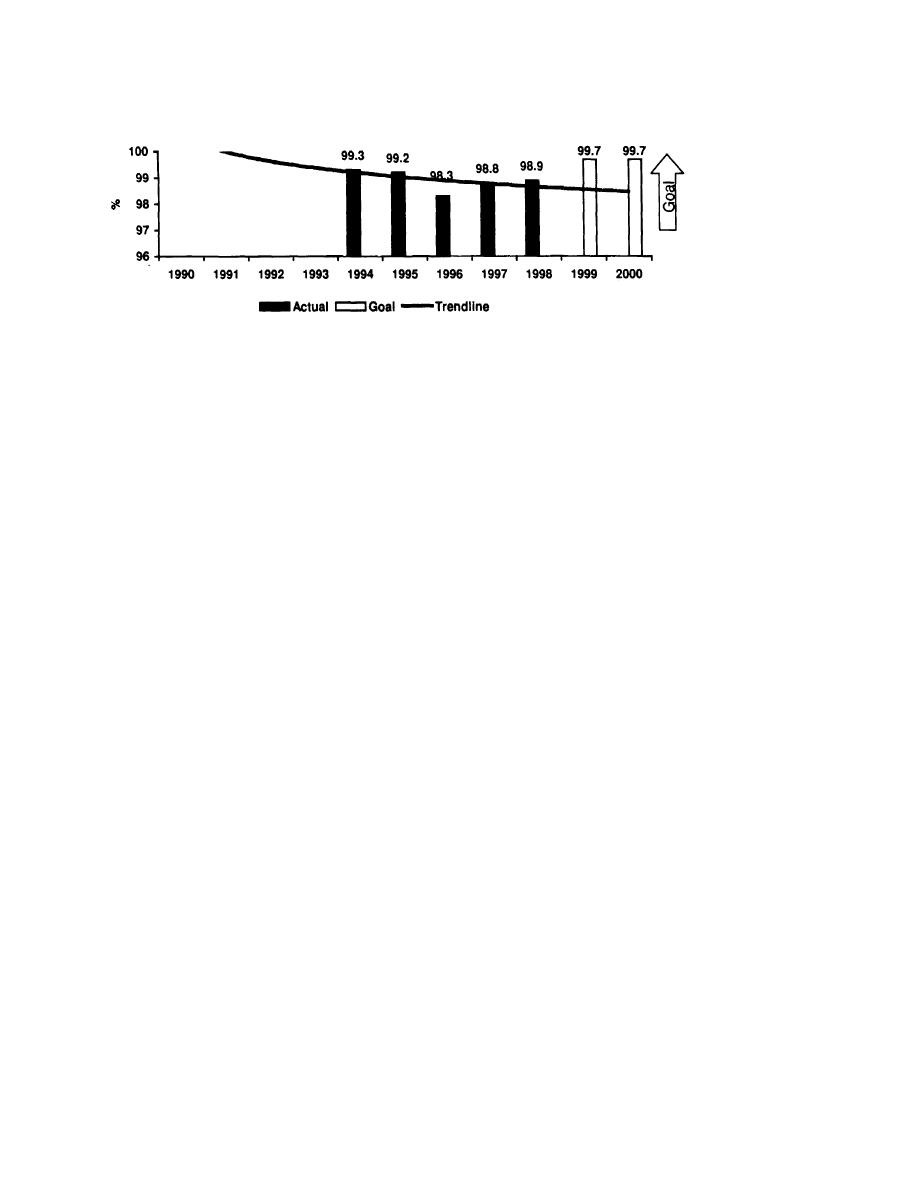
Encl (2) to COMDTINST 16010.8
Goal M1: Maximize vessel mobility within ports and waterways.
Target: Maintain navigation aid availability days at 99.7% of all days.
Analysis and Evaluation
Aid availability has not been reaching the desired standard of 99.7%. This standard may
be reviewed to validate its appropriateness as a performance measure. Additionally, this
measure understates the true availability of the total aids to navigation system - a
single aid outage does not usually significantly degrade the utility of an entire aid
system in a port or waterway. Also, aids provide several facets of navigation utility -
visual, audible, and electronic. An outage in one facet does not always affect the
others.
FY00 Key Initiatives
Seven Coastal Buoy Tenders (OE); Buoy Tender Infrastructure Support (OE); Seagoing Buoy
Tender (WLB) Replacement (AC&I); Stern Loading Buoy Boat (BUSL) Replacement (AC&I):
Replaces aging buoy tenders with more capable vessels to reduce needed resources. Buoy
tenders maintain aid to navigation infrastructure that minimizes accidents such as
collisions and groundings.
Differential Global Positioning System Follow-on (OE): Provides for the operation of
DGPS sites completed in FY99, and moves the system further toward full operational
capability. DGPS provides mariners with a technologically advanced, reliable positioning
information.
Waterways Aids to Navigation Infrastructure (AC&I): Commences projects to install,
replace, and realign navigation aids in coordination with Corps of Engineers channel
dredging projects. Highlights: Chesapeake Bay, and the Houston Ship Channel. This will
improve aid to navigation infrastructure to support and maximize the utility of the
Corps of Engineers projects.
Waterways Safety & Management & ATON (RDT&E) Provides for improved waterway management
tools, including the computerized Waterways Evaluation Tool (WET) and other projects for
establishing the appropriate mix of navigation systems.
Mobility 29



 Previous Page
Previous Page
